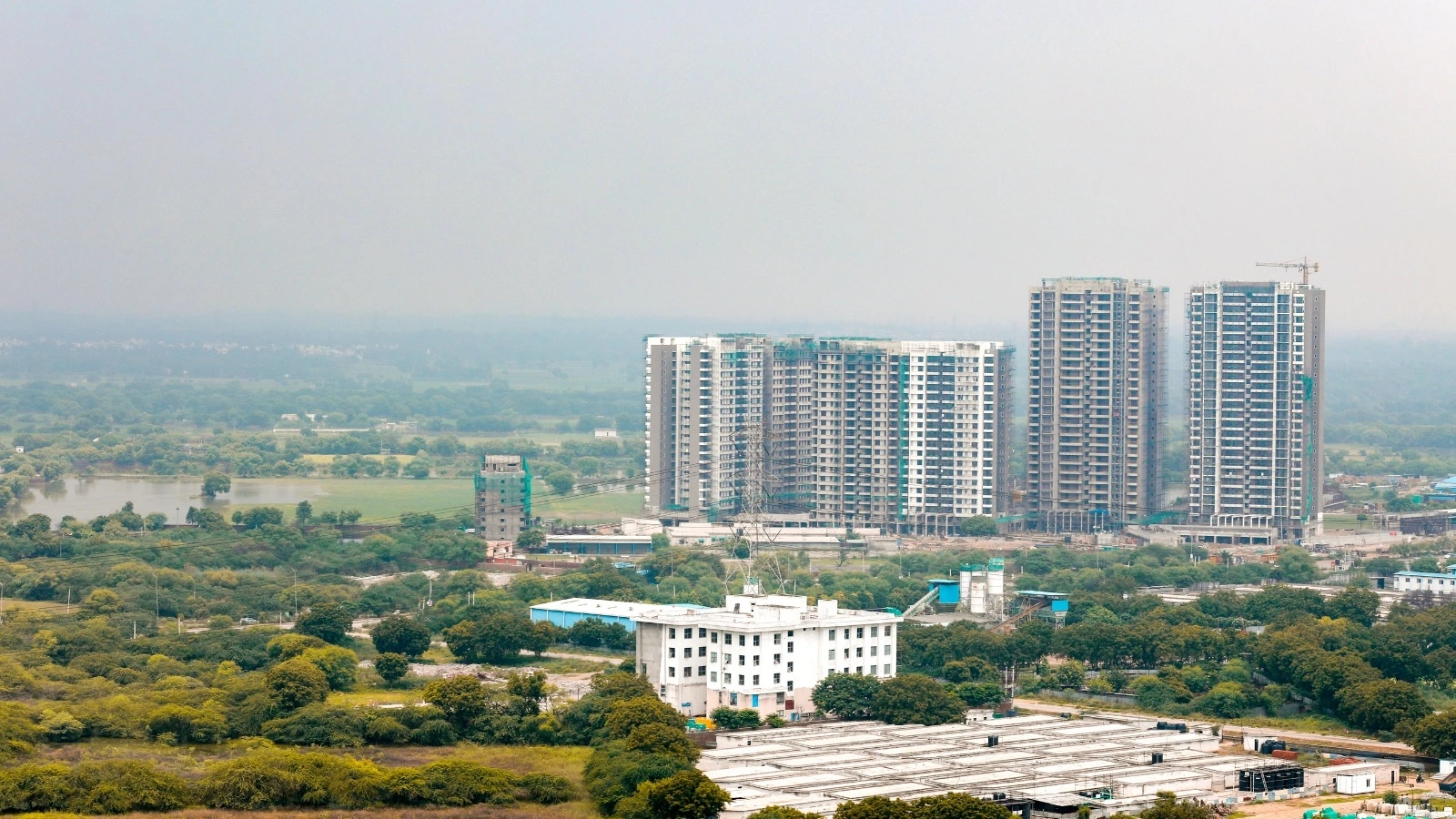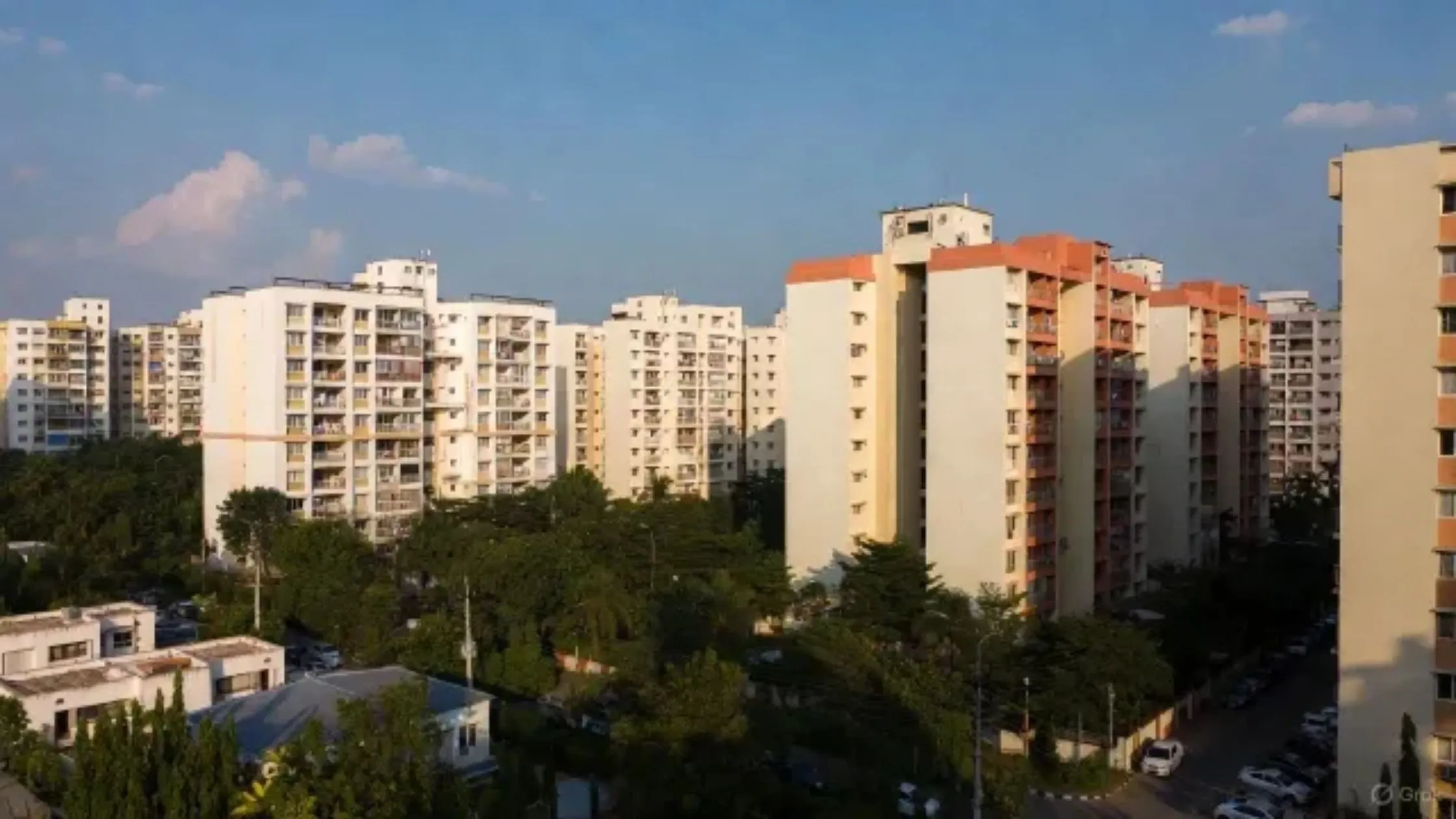Table of Content
According to ICRA's latest report, the Indian real estate market is expected to register a gradual revival in FY26, with new realty launches in the top seven cities expected to increase by 6-9% to around 620-640 million square feet. This expected growth follows a temporary decline in FY25 due to approval delays and is likely to benefit from low inventory levels and carryover projects from last year.
FY25: A Year of Challenges
The Indian real estate sector in FY24 saw a watershed thrust with project launches reaching a record high of 701 million square feet. However, in FY25, there was a dramatic drop of 14-17% largely because of the timing of approvals from local authorities. Nonetheless, the replacement ratio (new launches as a ratio to sales) remained stable at 1x. This ratio is expected to remain stable for FY26, which continues to support stable sales velocity.
Also Read: RBI MPC Repo Rate Cut: A Boost for First-Time Homebuyers and Real Estate?
Factors Driving Growth in FY26
1. Economic Policies and Repo Rate Cuts
ICRA projects a 50-basis point reduction in the repo rate in FY26, building on the 25-bps cut announced in February 2025. This move, coupled with lower income tax rates outlined in the Union Budget for FY26, is likely to enhance affordability and boost consumer confidence.
2. Government Focus on Affordable Housing
The government plans to boost the PMAY-Urban programme by 54% compared to FY25, indicating its commitment to increasing the supply of affordable housing. However, a second tranche of the SWAMIH Fund worth ₹15,000 crore will also improve liquidity to stressed projects and complete an additional 40,000 housing units.
3. Rising Demand for Mid and Luxury Segments
Over time, there has been a marked shift in buyer preference toward mid and luxury housing. The share of launches in the luxury segment rose from 18% in FY22 to 34% in the first nine months of FY25. Of course, this is in part due to a growing preference for larger, higher-quality homes, as consumer lifestyles continue to grow and change.
Key Trends and Projections
1. Area Sold and Launch Activity
- Area sold in the top seven cities is anticipated to grow by 1-4% in FY26.
- Years-to-Sell (YTS) ratios will remain comfortable at 1.0-1.1x, indicating a balanced market.
2. Average Selling Prices (ASP)
- ASP saw significant growth of 11% annually in FY23 and FY24, followed by a 13-15% rise in FY25.
- In FY26, ASP is expected to moderate, growing by 3-5%, ensuring sustained affordability across segments.
3. Consolidation in the Real Estate Market
- The sector is witnessing a shift towards larger, established players who are better equipped to navigate market fluctuations.
- These players maintain low leverage, with gross debt to cash flow ratios projected at 1.50-1.60x for FY25 and FY26.
Positive Sentiments for the Residential Real Estate Sector
According to ICRA's outlook, the residential real estate sector demonstrates a stable outlook due to strong demand for mid and luxury housing as well as governmental plans for affordable housing. Developers will likely benefit from lower borrowing costs which will facilitate new project launches and clearance of previous unsold inventory.
Conclusion
The anticipated increase in new project launches in FY26 is indicative of the resilience of the Indian real estate sector despite its challenges. The top seven cities are expected to continue to exhibit underlying governmental and agency policies, fluctuations in consumer preferences, and stable market conditions. As we start FY26, developers and homebuyers can expect market equilibrium availability of affordable pricing, quality offerings, and stability will continue to present opportunities.
Also Read: Retail Leasing in India Grows 55% in Q1 2025, Hyderabad Leads the Way





_1765522271.webp)

Ans 1. The new realty launches in India's top seven cities are expected to increase by 6-9%, reaching around 620-640 million square feet by FY26, according to ICRA.
Ans 2. The decline of 14-17% in FY25 was primarily due to delays in obtaining approvals from local authorities, despite a stable replacement ratio of 1x.
Ans 3. Key drivers include anticipated repo rate cuts, increased government funding for affordable housing through PMAY, and a ₹15,000 crore tranche of the SWAMIH Fund to complete stalled projects.
Ans 4. There is a growing demand for mid and luxury housing. The share of luxury segment launches increased from 18% in FY22 to 34% by the first nine months of FY25, driven by consumer preferences for larger and higher-quality homes.
Ans 5. ASP is projected to grow at a moderate rate of 3-5% in FY26, compared to 11% annually in FY23 and FY24, and a 13-15% increase in FY25, ensuring sustained affordability.
Ans 6. Area sold in these cities is projected to grow by 1-4% in FY26, with years-to-sell (YTS) ratios expected to remain balanced at 1.0-1.1x.
Ans 7. The government is increasing its focus on affordable housing by boosting PMAY funding by 54% compared to FY25 and utilizing the SWAMIH Fund to complete an additional 40,000 housing units in stressed projects.